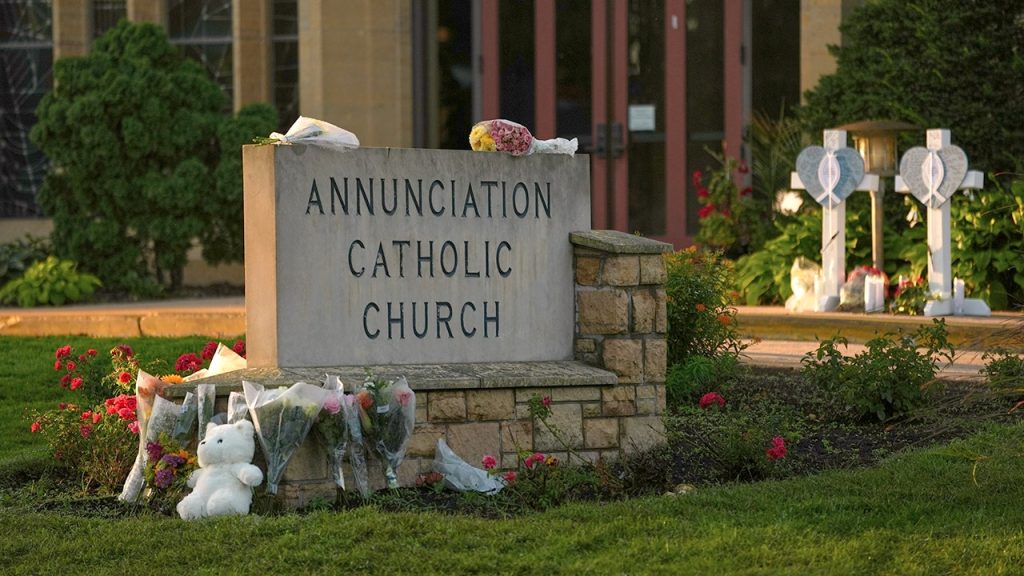Rising Tide of Violence Against American Churches: A Concerning Trend
In a troubling development across the United States, attacks targeting churches have seen a dramatic increase in recent years, highlighting a concerning pattern of religious hostility. According to a comprehensive report by the Family Research Council, an evangelical nonprofit organization, a total of 1,384 incidents of hostility against U.S. churches were documented between January 2018 and December 2024. This rising tide of violence culminated in a tragic shooting at Annunciation Catholic Church in Minnesota on a Wednesday morning, where two children lost their lives and 18 others, including more than a dozen children from the school, sustained injuries. The shooter, who was found dead from a self-inflicted gunshot wound, was wearing black tactical gear and carrying multiple long guns—a stark reminder of the lethal threat now facing religious institutions across America.
The statistics reveal a startling escalation in these incidents over time. What began as 50 documented cases in 2018 gradually increased to 83 in 2019, dipped slightly to 55 during the pandemic year of 2020, then rose to 98 in 2021. However, 2022 marked a turning point with 198 recorded instances, followed by a dramatic spike to 485 in 2023. While 2024 showed a slight decrease with 415 incidents, this figure remains alarmingly high—nearly equivalent to the findings from the group’s very first report which had covered a much longer 57-month period. These 415 incidents in 2024 affected 383 churches across 43 states, demonstrating the nationwide scope of the problem. California led with 40 incidents, followed by Pennsylvania with 29, Florida and New York with 25 each, Texas with 23, and Tennessee and Ohio both reporting 19 cases. As noted in the report, states with larger populations tended to experience more incidents, though no region of the country has been spared.
The research methodology employed by the Family Research Council involved reviewing open-source documents, reports, and media coverage containing terms like “church threats,” “church vandalism,” and “church arson.” This approach, while comprehensive, likely undercounts the true scope of hostility against churches, as many cases may go unreported to law enforcement or remain unpublished by news outlets. The researchers acknowledge this limitation, stating, “We identified 415 incidents in 2024; however, this figure may not represent the full scope of hostility against churches, as many cases likely went unreported.” Despite potential underreporting, the documented cases paint a troubling picture of increasing hostility toward religious institutions at a time when fewer Americans are attending religious services in person, creating a complex interplay between declining religious participation and rising anti-religious sentiment.
Vandalism remains the most common type of incident across the years studied, with many states that recorded high numbers of incidents in 2023 also ranking among the top affected areas in 2024. The nature of these incidents has remained relatively consistent year over year, suggesting established patterns of behavior targeting religious institutions. However, 2024 did show some shifting trends, particularly a notable increase in gun-related incidents alongside a decrease in incidents motivated specifically by pro-abortion sentiments. This evolution in the nature of attacks suggests that the motivations behind anti-church violence may be diversifying beyond specific ideological grievances to encompass broader hostility toward religious institutions as a whole. The report’s authors note, “Although the total number of incidents slightly decreased in 2024, we observed a continuation of many of the previous year’s trends,” indicating that while the raw numbers may fluctuate, the underlying problems remain persistent.
The recent shooting at Annunciation Catholic Church in Minnesota represents one of the most tragic examples of this ongoing trend. Police discovered the shooter, who was born male but later identified as female and underwent a legal name change in 2019, dead from a self-inflicted gunshot wound. This incident, with its devastating impact on a school community, highlights the particular vulnerability of religious educational institutions where children gather. The shooter’s tactical gear and multiple weapons suggest a planned assault rather than a spontaneous act, adding another layer of concern for church security professionals nationwide. While the specific motivation behind this attack remains under investigation, it joins hundreds of other incidents that collectively represent a mounting threat to religious communities across America.
As this wave of violence continues, religious institutions face difficult questions about security measures, community outreach, and how to maintain their traditional role as welcoming sanctuaries while protecting their congregants. The Family Research Council’s report serves as both documentation of a troubling trend and a call to awareness about the challenges facing American churches in the current social climate. Whether motivated by ideological opposition, mental health issues, or other factors, these attacks represent a significant threat to religious freedom and community safety. As incidents of church vandalism, arson, and violence continue at historically high levels, religious leaders, law enforcement agencies, and communities must work together to address this concerning pattern while preserving the openness and accessibility that define American religious institutions. The data suggests that this is not a passing phenomenon but rather a persistent challenge that requires serious attention and coordinated response strategies.


